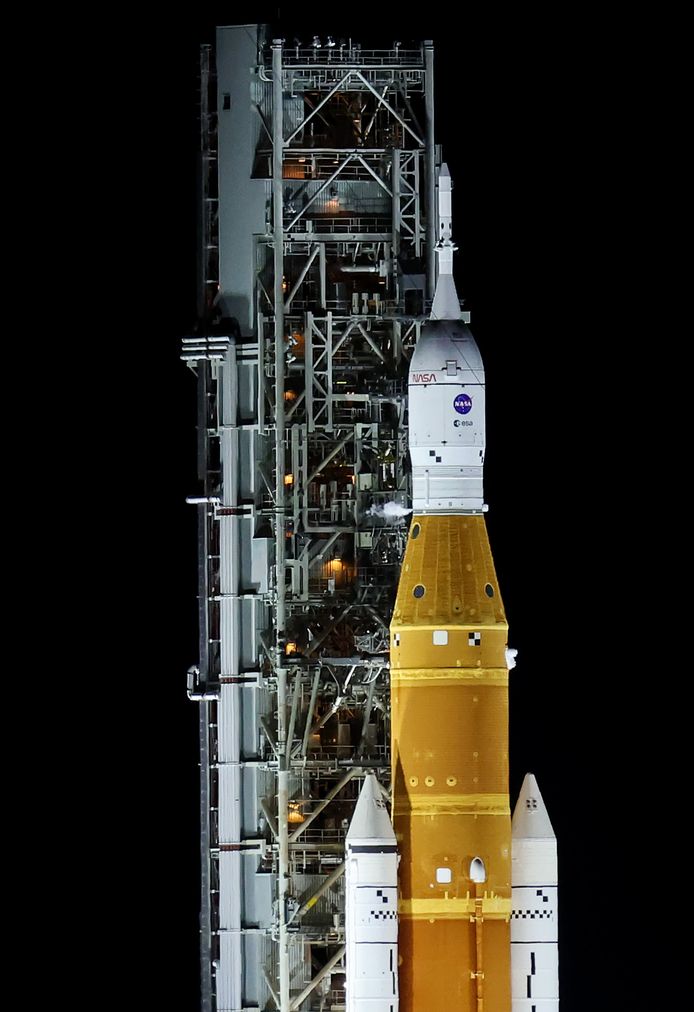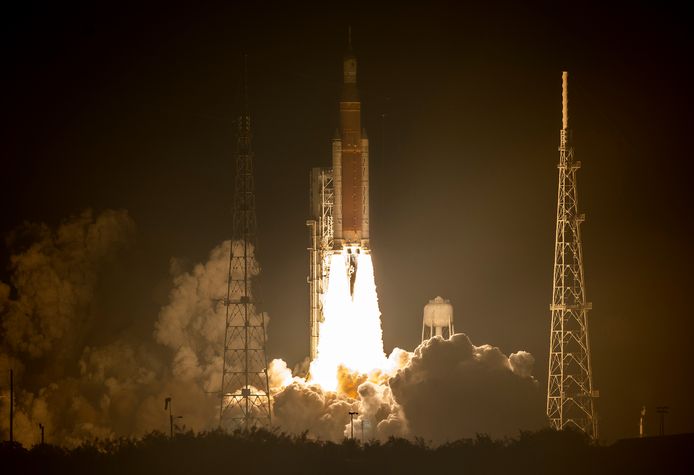Artemis missionNASA has successfully launched its SLS rocket, the most powerful rocket in the world. At 7:47 am, the spacecraft lifted off from Cape Canaveral, Florida. This opens the way for the United States to embark on a historic voyage to the Moon and back. The goal of the unmanned Artemis I mission is to return people to our natural satellite and back in a few years.
The uncrewed test flight of the SLS (Space Launch System) rocket, the most powerful and at 98 meters high, also the largest in the world, marked the first major debut of the US Moon Return program. Fifty years after the Apollo lunar mission, NASA has taken a crucial first step toward returning astronauts to the lunar surface.
“For the Artemis generation, this is for you,” said launch manager Charlie Blackwell-Thompson, the first woman at NASA to hold the position, before giving the go-ahead.
40,000 kilometers per hour
On top of the SLS rocket is the Orion capsule, which will eventually deliver astronauts to our natural satellite. For this test flight, that capsule won’t land on the Moon, but it will venture 40,000 miles from the Moon, and 280,000 miles from Earth, which is a record for a spacecraft that can carry a crew. To reduce costs, the US space agency reused engines from old spacecraft.
At a speed of 40 thousand kilometers per hour, Orion will reach the moon in five days. About 25 days later, on December 11, the capsule will again land on Earth in the Pacific Ocean. This also puts the heat shield to the test. It would have to withstand temperatures about half that of the Sun’s surface as it passed through the atmosphere. With Artemis, NASA wants to send the first woman and first person of color to the Moon.
Belgian technology
With the mission of flying approx 300 Belgian-made sensors Along. These come from the SCK CEN Nuclear Research Center, located on Mule, along with another 10,900 sensors, which have been attached to Helga and Zohar, the two dolls that were on the ship as crew. For example, the cosmic radiation a person is exposed to during a moon mission should become apparent to us, for example from the Sun and exploding stars. SCK CEN states that this may increase the risk of cancer or have other health consequences.
During the flight, the Israeli Zohar will wear a specially designed spacesuit. Helga, her German sister, didn’t get it. “This gives us the opportunity to compare the radiation exposure between the two dummies, calculate the difference and confirm the protection,” explains Olivier Van Hoy, a dosimetry expert at SCK CEN.
Third time is a charm
Third time lucky for Artemis. Earlier this year, two rocket launches were delayed at the last minute due to technical problems and two hurricanes that were several weeks late. Once again, NASA struggled to fill the rocket with cryogenic fuel, more than 2.7 million liters of liquid hydrogen and oxygen. A highly flammable hydrogen leak was detected the night before take-off. The fix caused another delay in the schedule.
“A lot of sweat and tears went into this launch,” NASA Administrator Bill Nelson said Tuesday. “It will allow us to fly to the Moon and beyond for decades to come.”
Journey to Mars
Ambitions are great. In 2024, the second mission in the Artemis program should take astronauts to the moon, again without landing. That honor is reserved for Artemis 3, whose ignition will happen in 2025 at the earliest. Next, NASA plans an annual mission to build a base at the South Pole. Tests will be carried out there with transportation and power plants, among others. Eventually there must be a permanent human settlement, in preparation for the journey to Mars. It should come at the end of 2030 and take about two years.
Unlimited free access to Showbytes? Which can!
Log in or create an account and never miss a thing from the stars.

“Total coffee specialist. Hardcore reader. Incurable music scholar. Web guru. Freelance troublemaker. Problem solver. Travel trailblazer.”













More Stories
GALA lacks a chapter on e-health
Weird beer can taste really good.
Planets contain much more water than previously thought